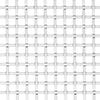Filter by
Material
Material Grade
Thickness
Color
Performance
Cell Type
Clarity
For Use With
DFARS Specialty Metals
Facing Material
Filler Material
Reinforcement Material
Strip Material
Face Material
Raw Materials
Sealing
Building and Machinery Hardware
Fastening and Joining
Material Handling
Heating, Ventilation, and Air Conditioning
Safety Equipment
Communication
Measuring and Inspecting
Electrical
Fabricating and Machining
Fluid Handling
Facility and Grounds Maintenance




























































































